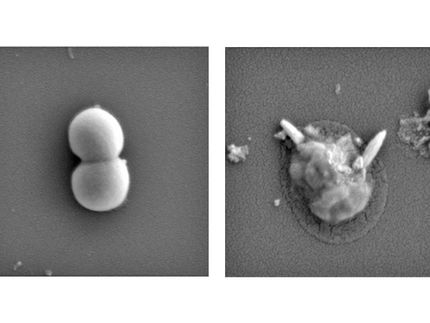First discovery in United States of colistin resistance in a human E. coli infection
The Multidrug Resistant Organism Repository and Surveillance Network (MRSN) at the Walter Reed Army Institute of Research (WRAIR) characterized a transferrable gene for colistin resistance in the United States that may herald the emergence of truly pan-drug resistant bacteria.

geralt, pixabay, CC0
Colistin is the last agent used to combat bacteria that are resistant to the strongest antibiotics. Colistin has remained the best tool available to treat multidrug resistant bacteria because bacteria were not exchanging genes for its resistance. This latest discovery shows that colistin may be losing its effectiveness in antimicrobial therapy. Now, bacteria may be exchanging resistance genes for colistin.
Alarms sounded in the microbiology community in late 2015 when the first transferrable gene for colistin-resistance was identified in China. Since the report, the global health community has monitored and searched for the occurrence of this gene in the food supply and in humans. This colistin-resistance gene has been reported in Europe and Canada and, as of now, is reported in the U.S.
A clinical sample from a urinary tract infection was collected from a patient in a military treatment facility in Pennsylvania. The sample was sent to the Walter Reed National Military Medical Center (WRNMMC) where colistin susceptibility was tested. The results showed that no safe dosage of colistin would be effective to treat such a bacterial infection. WRNMMC recognized colistin-resistance and sent a sample to WRAIR's MRSN for sequencing, which identified the colistin-resistant gene, mcr-1.
"Colistin is one of the last efficacious antibiotics for the treatment of highly resistant bacteria. The emergence of a transferable gene that confers resistance to this vital antibiotic is extremely disturbing. The discovery of this gene in the U.S. is equally concerning, and continued surveillance to identify reservoirs of this gene within the military healthcare community and beyond is critical to prevent its spread," reported Dr. Patrick McGann, MRSN, WRAIR.
Through intergovernmental communication, it was learned the CDC and USDA are also reporting a swine intestinal infection with a single mcr-1 positive E. coli strain. While there is no evidence that links these recent findings, the evidence of the strain in the U.S. is a public health concern. The gene is transferrable to other bacteria, which could worsen the current global crisis of antimicrobial resistance.
An urgent public health response is underway to contain and prevent potential spread of mcr-1. Active surveillance of multidrug resistant organisms (MDROs), such as mcr-1, allows for earlier and more accurate identification of originating sources. The collection and storage of isolates and samples in the MRSN's growing repository helps researchers identify trends in resistance and prevalence of MDROs and provide best practices for medical providers. The repository also enables them to compare isolates from previous occurrences to better respond to future findings. Recognized as a model program by the White House, the MRSN is a key component of the National Action Plan for Combating Antibiotic Resistant Bacteria (CARB).
With the MRSN's archive, this isolate will be archived for future studies to identify new countermeasures. "Through our surveillance system, we have the unique ability to coordinate source information with susceptibility and sequencing data, and if need be, go back to understand changes in infecting organisms to best treat infection and track emerging multidrug resistant organisms," COL Emil Lesho, Director of the MRSN, WRAIR.



























































